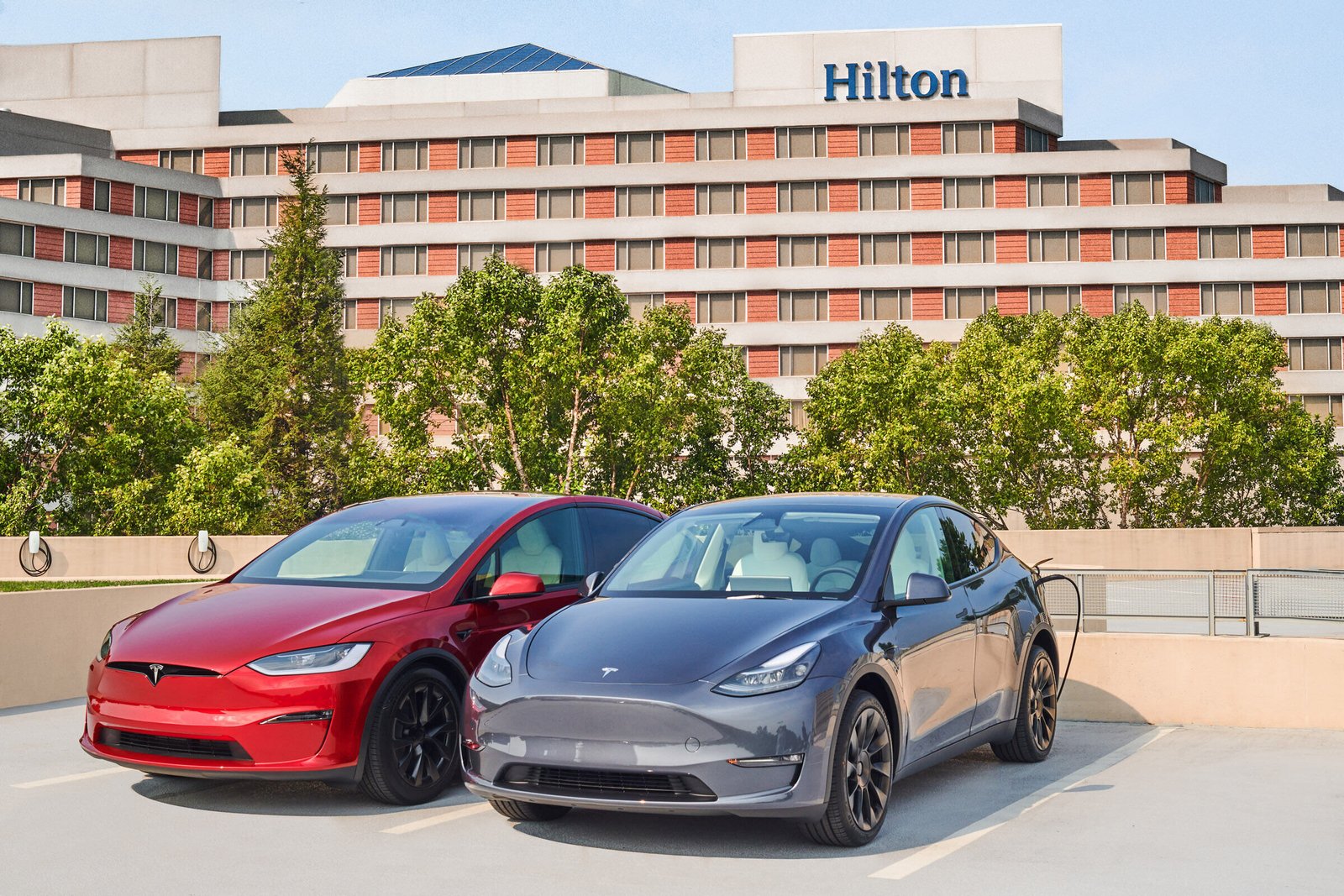Tesla plans to install 20,000 electric vehicle charging stations at 2,000 Hilton properties in the United States, Mexico, and Canada early next year, the companies said Thursday.
For Tesla, building wall plugs is another way to increase mass adoption by providing more convenient charging locations. The company’s Universal Wall Connector can charge any North American vehicle, not just Tesla vehicles. For Hilton, it’s about meeting demand from leisure and business travelers.
“We are seeing a rapid and dramatic increase in the number of charging requests for electric cars. We strive to meet the needs of our guests through this new agreement with Tesla,” said Hilton’s Chief Brand Officer Matt Schuyler.
The announcement coincides with the start of the business travel season, as more executives attend conferences such as the APEC Summit, Communacopia, and Dreamforce, which offer hotel operators an opportunity to increase revenues. US hotel prices fell over the summer as more Americans went abroad to enjoy time in Europe. This fall, Wall Street analysts will want to see if hotel brands can bring U.S. business travel bookings back to pre-pandemic levels.
According to Schuyler, the availability of electric car charging stations has a significant impact on hotel reservations.
“The number one search attribute for our hotels is airport transportation. That’s No. 1. No. 2 is electric vehicle charging. And that’s a dramatic change that wasn’t even on the radar a few years ago,” Schuyler said.
Hilton is working with its owners to identify properties along roads and other key urban areas where it would make the most sense for Tesla to install its charging stations. The additions make Hilton’s recharge network the largest of any restaurant operator; the company says.
Gene Munster, an analyst at Deepwater Asset Management, predicts that the adoption of electric cars in the United States will grow steadily in the coming years, from 2 percent in 2020 to 22 percent by 2025.


